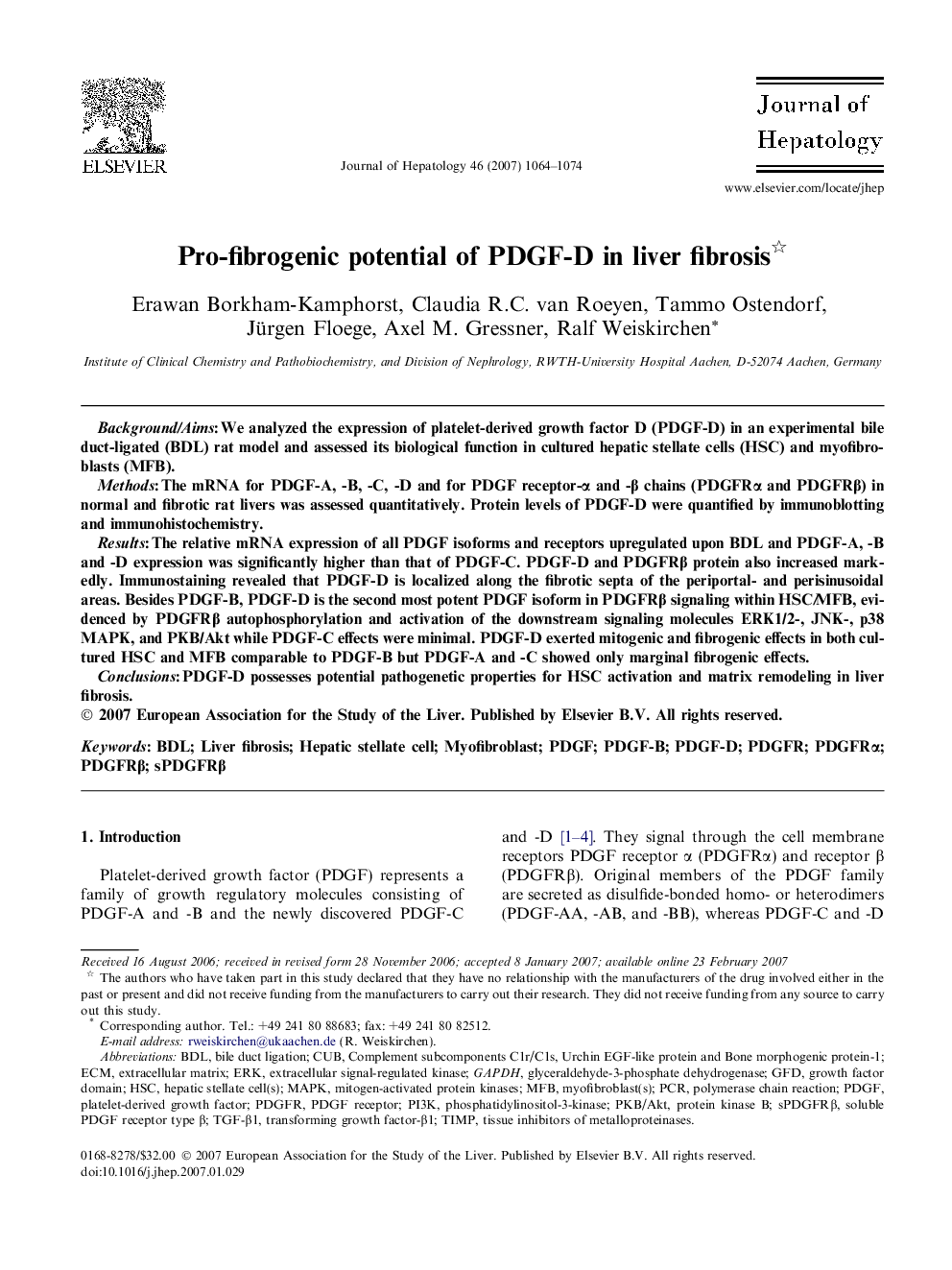| Article ID | Journal | Published Year | Pages | File Type |
|---|---|---|---|---|
| 3314619 | Journal of Hepatology | 2007 | 11 Pages |
Background/AimsWe analyzed the expression of platelet-derived growth factor D (PDGF-D) in an experimental bile duct-ligated (BDL) rat model and assessed its biological function in cultured hepatic stellate cells (HSC) and myofibroblasts (MFB).MethodsThe mRNA for PDGF-A, -B, -C, -D and for PDGF receptor-α and -β chains (PDGFRα and PDGFRβ) in normal and fibrotic rat livers was assessed quantitatively. Protein levels of PDGF-D were quantified by immunoblotting and immunohistochemistry.ResultsThe relative mRNA expression of all PDGF isoforms and receptors upregulated upon BDL and PDGF-A, -B and -D expression was significantly higher than that of PDGF-C. PDGF-D and PDGFRβ protein also increased markedly. Immunostaining revealed that PDGF-D is localized along the fibrotic septa of the periportal- and perisinusoidal areas. Besides PDGF-B, PDGF-D is the second most potent PDGF isoform in PDGFRβ signaling within HSC/MFB, evidenced by PDGFRβ autophosphorylation and activation of the downstream signaling molecules ERK1/2-, JNK-, p38 MAPK, and PKB/Akt while PDGF-C effects were minimal. PDGF-D exerted mitogenic and fibrogenic effects in both cultured HSC and MFB comparable to PDGF-B but PDGF-A and -C showed only marginal fibrogenic effects.ConclusionsPDGF-D possesses potential pathogenetic properties for HSC activation and matrix remodeling in liver fibrosis.
